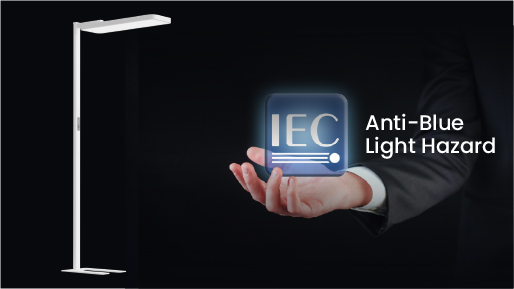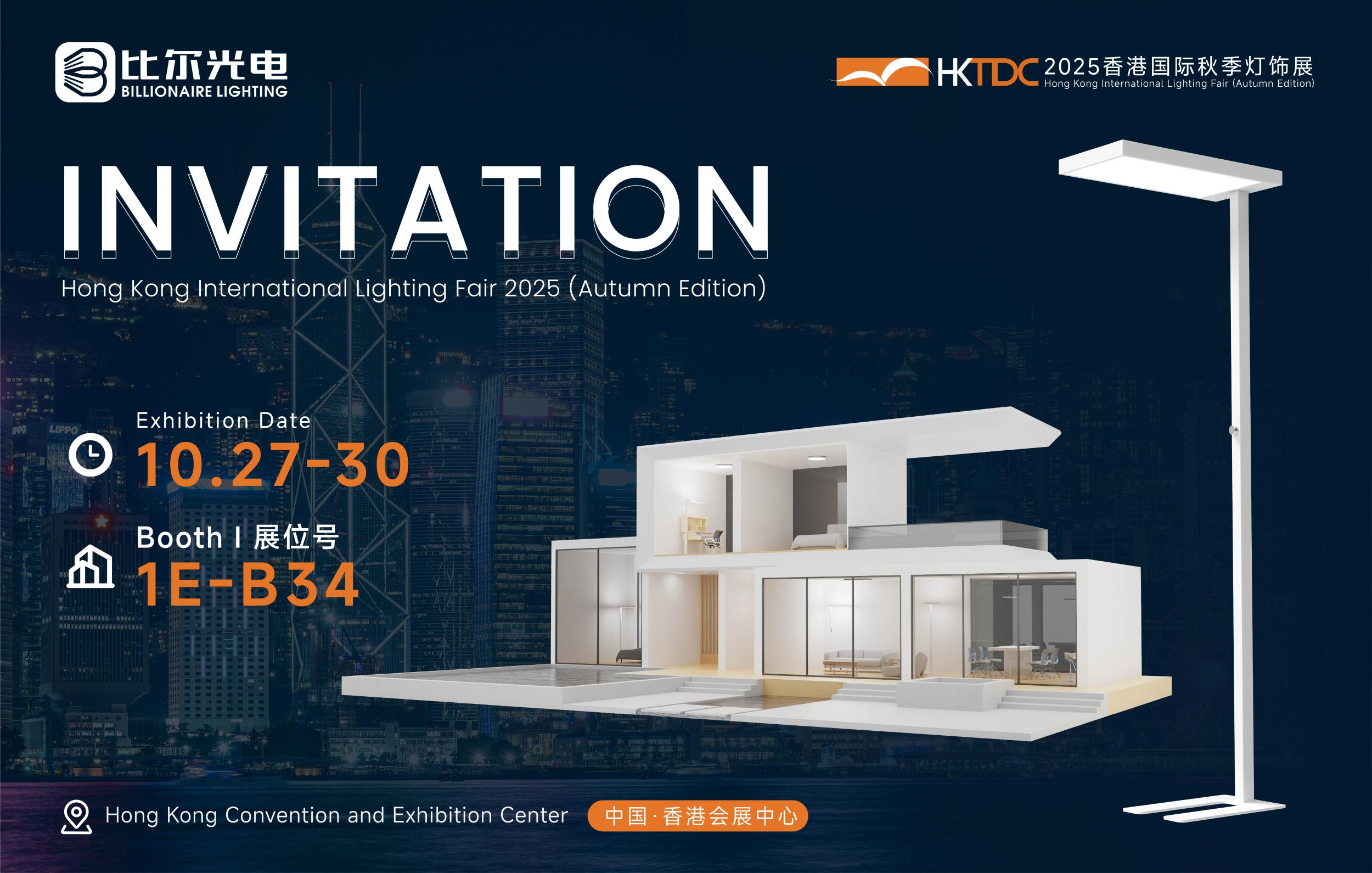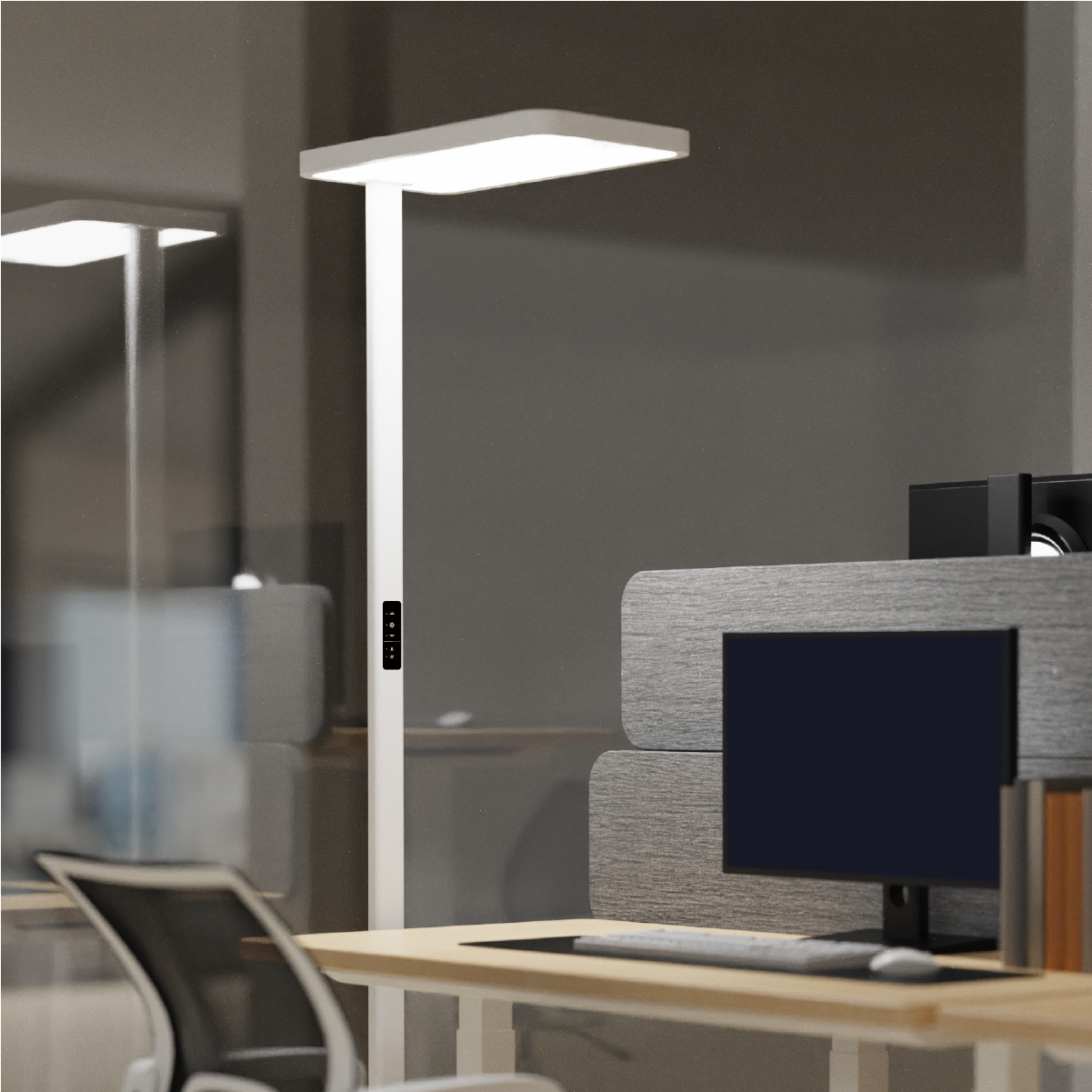Introduction
Freestanding lamps, also known as floor lamps, are a staple in interior design, serving both functional and aesthetic purposes. They have the unique ability to provide targeted or ambient lighting in various spaces, from living rooms and bedrooms to offices and commercial areas. Their portability and diverse design options make them a popular choice for enhancing the illumination and atmosphere of any room.
Types of Freestanding Lamps
Traditional Freestanding Lamps
Traditional freestanding lamps draw inspiration from classic design eras such as Victorian, Edwardian, and Art Deco. These lamps often feature ornate bases crafted from materials like brass, bronze, or mahogany. The bases are intricately detailed with carvings, filigree work, or decorative motifs. For example, a Victorian - style floor lamp might have a brass base with elaborate floral patterns and a finial on top. The lampshades are typically made of fabric, such as silk or linen, in classic shapes like bell - shaped or drum - shaped.
Traditional lamps are well - suited for formal living rooms, traditional - themed bedrooms, or elegant libraries. They add a touch of timeless elegance and sophistication to the space. The warm, diffused light they emit creates a cozy and inviting atmosphere, perfect for reading, relaxing, or engaging in conversation. In a traditional living room with richly - colored upholstery and antique furniture, a traditional freestanding lamp can blend seamlessly, enhancing the overall aesthetic of the room.
Modern and Contemporary Freestanding Lamps
Modern and contemporary freestanding lamps embrace simplicity, minimalism, and innovative materials. They are characterized by sleek lines, geometric shapes, and a combination of materials like aluminum, stainless steel, glass, and high - tech plastics. Some modern floor lamps have adjustable arms or heads, allowing for versatile light direction. A floor lamp with a long, slender metal stem and a cylindrical glass shade might be adjustable to direct light upwards for ambient lighting or downwards for task lighting.
These lamps are popular in modern - style homes, contemporary offices, and urban living spaces. They bring a sense of modernity and functionality to the environment. In a modern living room with a minimalist color scheme and clean - lined furniture, a contemporary freestanding lamp can serve as a focal point, adding a touch of style without overwhelming the space. Their ability to adapt to different lighting needs makes them highly practical in open - plan living areas where different activities take place.
Task - Oriented Freestanding Lamps
Task - oriented freestanding lamps are designed with a specific function in mind: to provide focused light for activities that require concentration and visual acuity. Reading floor lamps are a common type. They are equipped with a narrow, articulated arm that can be precisely positioned over a book, magazine, or work area. These lamps usually use high - quality bulbs, such as LEDs with a high Color Rendering Index (CRI), to ensure accurate color representation and reduce eye strain during extended reading or work sessions.
In a home office, a task - oriented floor lamp placed next to the desk can supplement overhead lighting, ensuring that the work surface is well - lit for tasks like writing, using a computer, or working on detailed projects. Some task - oriented lamps also come with additional features like magnifying lenses, which are useful for activities such as jewelry making, model building, or detailed drawing. Their targeted lighting helps to create a dedicated work or reading zone within a larger space.
Uplighting Freestanding Lamps
Uplighting freestanding lamps are engineered to direct light upwards, typically towards the ceiling. This upward - directed light then bounces off the ceiling, creating a soft, diffused glow that can make a room feel more spacious, inviting, and well - lit. They are commonly used in living rooms, bedrooms, and hallways. Placed in corners, uplighting floor lamps can fill in dark areas and add a warm, ambient light.
Some uplighting floor lamps come with colored filters or LED lights that can change colors, allowing for the creation of different moods. For example, a blue - toned uplight can create a calming and relaxing atmosphere in a bedroom, while a warm - yellow uplight can make a living room feel cozy and inviting. In a large open - plan living area, uplighting floor lamps can be used to enhance the overall lighting scheme, providing a gentle background light that complements other light sources.
Specialty and Decorative Freestanding Lamps
Specialty and decorative freestanding lamps are designed to make a strong visual statement. These lamps can come in unique shapes, sizes, and materials. Some may be designed to resemble works of art, with bases made of blown glass in vibrant colors or lampshades with elaborate patterns. For example, a floor lamp with a sculptural base made of recycled metal and a hand - painted lampshade can be a focal point in a contemporary art gallery or a trendy loft apartment.
Decorative floor lamps can also be used to highlight specific features in a room, such as a piece of artwork or an architectural detail. In a foyer, a large, decorative floor lamp can welcome guests with its unique design and add a touch of glamour to the entrance area. These lamps are not only sources of light but also decorative elements that can enhance the overall aesthetic of the space.
Design Considerations for Freestanding Lamps
Height and Proportion
The height of a freestanding lamp is a crucial factor. In a living room, a floor lamp that is too short may not provide adequate light coverage and may appear out of place. A standard height for a floor lamp in a living area is around 5 to 6 feet. However, in rooms with high ceilings, taller lamps, perhaps 7 to 8 feet, may be more appropriate to achieve the desired level of illumination and maintain a proper visual balance.
Proportion also extends to the size of the base and the shade in relation to the overall height of the lamp. A large, heavy - looking base may be suitable for a more substantial lamp, while a delicate, slender base pairs well with a lightweight shade. In a small bedroom, a smaller, more compact floor lamp with a proportionate base and shade would be a better choice to avoid overwhelming the space. The height and proportion of the lamp should be carefully considered in relation to the furniture and the size of the room to ensure a harmonious look.
Style Compatibility
The style of the freestanding lamp should harmonize with the overall decor of the space. In a traditional - style home, a lamp with a classic design will blend in seamlessly. In a modern, industrial - style space, a floor lamp with a metal - and - concrete construction and a simple, unadorned shade would be a better fit. If the room has a coastal theme, a lamp with a nautical - inspired base, such as one shaped like a ship's anchor, and a light - colored, breezy shade can enhance the theme.
It is essential to consider existing furniture, wall colors, and other decorative elements in the room when choosing a freestanding lamp. For example, in a room with dark - colored, traditional furniture, a floor lamp with a warm - toned, ornate base and a richly - colored shade would complement the decor, while in a room with light - colored, modern furniture, a sleek, white - colored floor lamp with a simple shade would be more appropriate. The lamp should enhance the existing design scheme rather than clash with it.
Light Output and Color Temperature
The light output of a freestanding lamp is measured in lumens. For general ambient lighting, a lamp with a lower lumen output, around 800 - 1200 lumens, may be sufficient. However, for task - oriented lighting, such as reading or working, a higher lumen output, between 1500 - 2000 lumens, is recommended. Color temperature is also an important consideration.
Warm - white light, with a color temperature of around 2700 - 3000K, creates a cozy and inviting atmosphere, making it suitable for living rooms and bedrooms. Cool - white light, with a color temperature of 4000 - 5000K, is more appropriate for task - oriented areas like home offices, as it provides a bright, clear light that is conducive to detailed work. Some freestanding lamps now come with adjustable color temperature options, allowing users to switch between warm and cool light depending on their needs. The choice of light output and color temperature should be based on the intended use of the lamp and the desired mood of the space.
Mobility and Stability
Since freestanding lamps are meant to be moved around, mobility is an important consideration. Lamps with wheels or a lightweight design are easier to relocate. However, stability is equally crucial. A floor lamp with a wide, heavy - based design is less likely to tip over, which is especially important in areas where there is a lot of foot traffic or where children and pets are present.
Some floor lamps come with features like weighted bases or anti - tip mechanisms to ensure stability. In a busy living room where people are constantly moving around, a stable floor lamp is essential to prevent accidents. The balance between mobility and stability should be carefully evaluated when choosing a freestanding lamp, especially in high - traffic or family - friendly environments.
Installation and Placement of Freestanding Lamps
Living Room
In the living room, freestanding lamps can be placed in several strategic locations. Placing a floor lamp next to a sofa or an armchair provides convenient reading light. The lamp can be adjusted to direct light onto the book or magazine, creating a comfortable reading nook. Positioning a floor lamp in a corner can add ambient light and fill in dark areas, enhancing the overall atmosphere of the room.
If the living room has a fireplace, placing a floor lamp on either side of the fireplace can create a balanced and inviting look. In a large living room, multiple floor lamps can be used to create different zones, such as a reading corner, a conversation area, and an area for watching TV. Each floor lamp can be adjusted to provide the appropriate light level and direction for the specific activity in that zone.
Bedroom
In the bedroom, a freestanding lamp can serve multiple purposes. Placed next to the bed, it can be an alternative to a bedside table lamp, freeing up space on the table. It can also be used to create a soft, relaxing atmosphere for winding down at night. A dim - mable floor lamp in the bedroom allows the user to adjust the light intensity to their preference.
Placing a floor lamp near a dressing table provides additional light for getting ready in the morning. In a master bedroom with a sitting area, a floor lamp can be added to the seating arrangement to make it more comfortable for reading or relaxing. The warm, soft light from the floor lamp can contribute to a peaceful and restful environment.
Home Office
For a home office, a task - oriented floor lamp is an essential addition. Placed next to the desk, it can be adjusted to direct light onto the work surface, reducing glare and providing sufficient illumination for tasks such as reading, writing, and using a computer. The adjustable arm or head of the floor lamp allows for precise light positioning.
In an office with a modern design, a sleek, adjustable floor lamp can also add a touch of style to the workspace, making it more pleasant and productive. The right amount of light from the floor lamp can help reduce eye strain during long hours of work. In a home office that doubles as a guest room, a freestanding lamp can be easily moved to different areas depending on the room's use.
Commercial Spaces
In commercial spaces such as cafes, restaurants, and hotels, freestanding lamps play a crucial role in creating a specific ambiance. In a cafe, floor lamps placed at each table provide intimate lighting for customers, enhancing their dining experience. The warm, soft light from the floor lamps can make the customers feel comfortable and relaxed.
In a hotel lobby, large, decorative floor lamps can be used to enhance the grandeur of the space, making a strong first impression on guests. In a restaurant, uplighting floor lamps can be used to highlight the decor and create a warm, inviting atmosphere for diners. The lighting from the floor lamps can also influence the perception of the food and the overall dining experience. In a retail store, freestanding lamps can be used to draw attention to specific products or displays.
Maintenance and Care of Freestanding Lamps
Cleaning
Regular cleaning is essential to keep freestanding lamps in good condition. The lamp body, whether it's made of metal, plastic, or other materials, should be wiped clean with a soft, dry cloth. For fabric lampshades, a gentle brush or a vacuum cleaner with a soft brush attachment can be used to remove dust. If the shade is stained, spot - cleaning with a mild detergent and water may be possible, but care should be taken not to damage the fabric.
Metal bases should be checked for signs of rust or tarnishing and can be polished if necessary. In high - traffic areas, such as living rooms or commercial spaces, lamps may need to be cleaned more frequently, perhaps once a week, while in less - used areas, monthly cleaning may be sufficient. Cleaning not only keeps the lamp looking good but also ensures optimal light output.
Bulb Replacement
Knowing when to replace the bulbs is important. The lifespan of bulbs varies depending on the type. Incandescent bulbs typically have a shorter lifespan compared to LED or CFL bulbs. LED bulbs can last for tens of thousands of hours, while incandescent bulbs may need to be replaced every few hundred to a few thousand hours.
When replacing bulbs, it is crucial to choose the correct wattage and type recommended by the manufacturer to ensure proper light output and the safety of the luminaire. In some cases, such as with dimmable bulbs, compatibility with the dimmer switch also needs to be considered. Regular bulb replacement helps to maintain the quality of light and the functionality of the lamp.
Checking for Damage
Periodically check the freestanding lamps for any signs of damage, such as loose connections, cracks in the base or shade, or frayed cords. If any damage is detected, the luminaire should be repaired or replaced promptly to avoid potential safety hazards, especially in the case of electrical components. For lamps with adjustable parts, such as arms or heads, check that they move smoothly. In the case of floor lamps with wheels, ensure that the wheels are in good working condition. Regular inspections can help to extend the lifespan of the lamp and keep it in safe working order.
Future Trends in Freestanding Lamps
Smart Lighting Integration
The future of freestanding lamps is likely to see increased integration with smart home technology. Smart floor lamps will be able to connect to a home's Wi - Fi network, allowing users to control the light intensity, color temperature, and even set schedules using a smartphone app. For example, a user could program the floor lamp to gradually increase in brightness in the morning to act as a natural wake - up light or to dim automatically in the evening to create a relaxing atmosphere.
Some smart floor lamps may also be able to respond to voice commands, thanks to integration with virtual assistants like Amazon Alexa or Google Assistant. This integration will not only provide convenience but also allow for more personalized lighting experiences. In a smart home, freestanding lamps can be synchronized with other smart devices, such as smart thermostats and security systems, to create a more integrated and efficient living environment.
Sustainable Materials and Design
As environmental concerns continue to grow, there will be an increasing focus on developing freestanding lamps using sustainable materials. This may involve using recycled metals, bamboo - based materials for lamp bases, and eco - friendly fabrics for lampshades. Designers will also focus on creating more energy - efficient luminaires, not only through the use of LED technology but also by optimizing the design to reduce energy waste.
For instance, floor lamps may be designed with more efficient reflectors to direct light more effectively. Sustainable design also includes making lamps more easily disassembled for recycling at the end of their lifespan. These sustainable practices not only benefit the environment but also appeal to consumers who are increasingly conscious of their ecological footprint.
Innovative Design Concepts
Future freestanding lamps are expected to feature more innovative design concepts. This may include lamps that change shape or form depending on the light setting or user interaction. For example, a floor lamp could have a flexible body that can be bent into different positions to direct light in various ways. There may also be a greater blurring of the lines between different types of luminaires, with designs that combine the features of task - oriented and decorative lamps in unique ways.
Innovative lighting effects, such as dynamic color - changing patterns or the ability to simulate natural light variations more accurately, may also become more common. These new design concepts will not only enhance the functionality of freestanding lamps but also transform them into statement pieces that add a touch of creativity and innovation to any space.
In conclusion, freestanding lamps are versatile and essential elements in interior design. Their diverse types, design considerations, installation options, and maintenance requirements make them suitable for a wide range of spaces and applications. With future trends promising even more innovation and functionality, they will continue to play a vital role in illuminating and enhancing the quality of our living and working environments.



